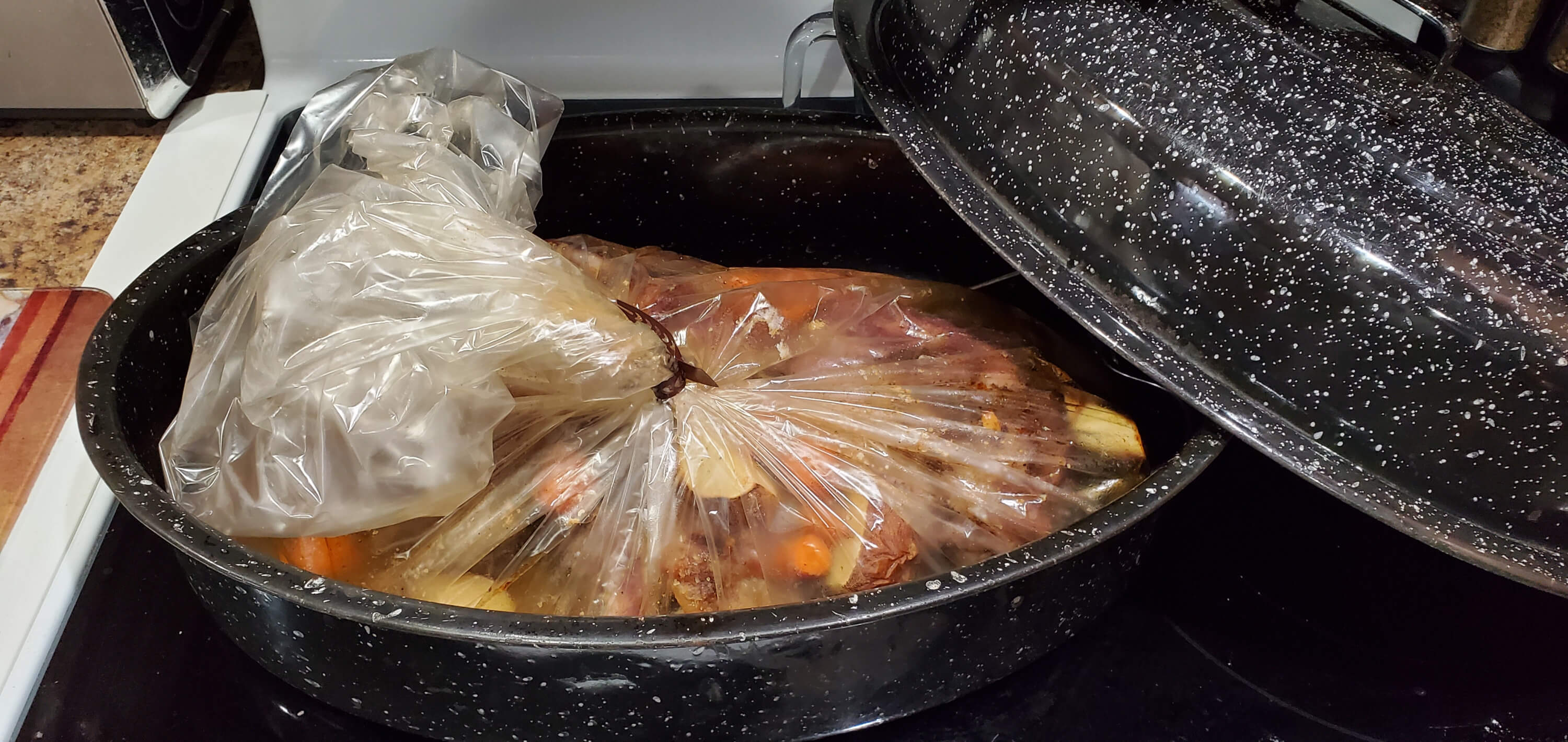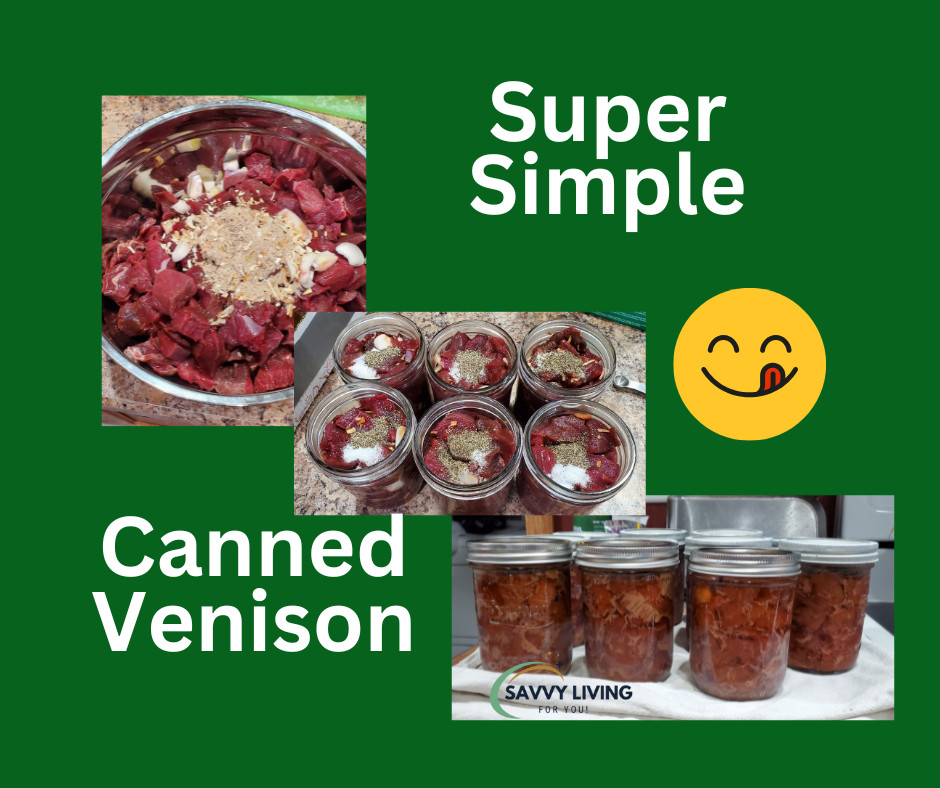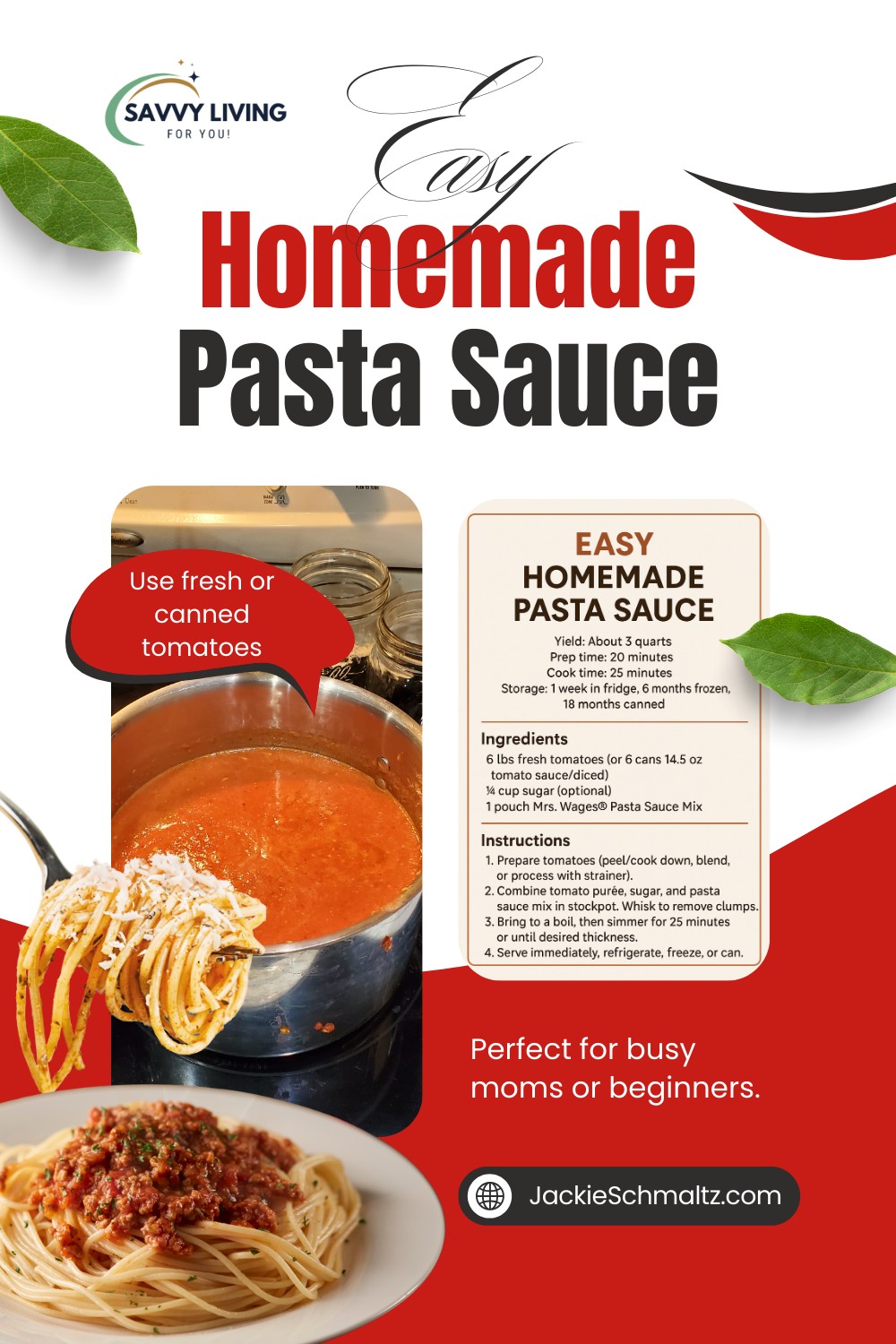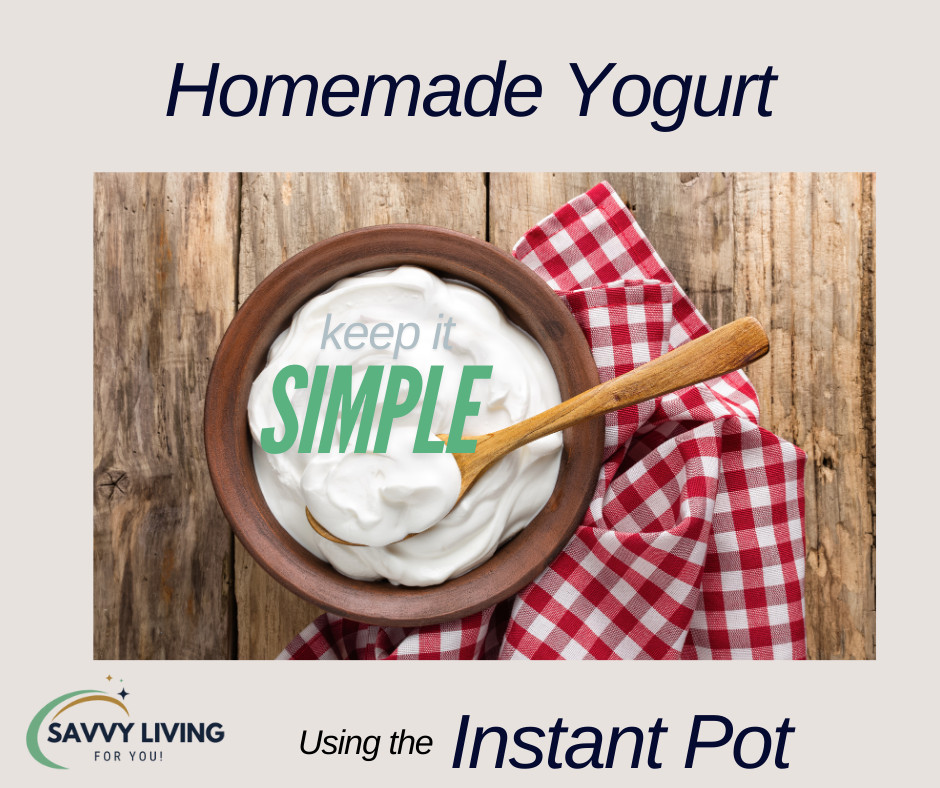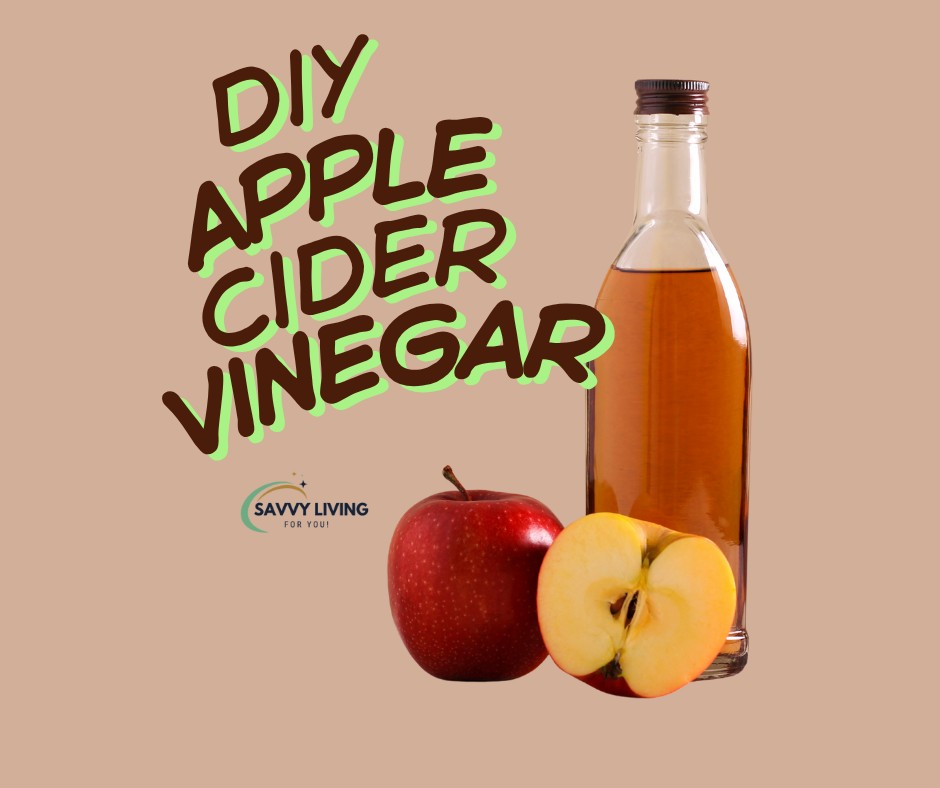
The apple harvest was abundant this year! I have made SO MANY things with my apples and have found myself knee-deep in apple peels and cores after each busy day of pie-making or juice steeping. Those “scraps” are actually gold for your homestead kitchen. You can turn them into homemade apple scrap vinegar, a tangy, probiotic-rich pantry staple that works just like apple cider vinegar “with the mother.”
Once you’ve made your vinegar, you can feed the spent scraps to your chickens or toss them in the compost pile. Nothing wasted!
🧺 What You’ll Need
- 1 gallon bucket of apple peels and cores (from organic, pesticide-free apples — more cores = more flavor)
- 1 quart non-chlorinated water
- ¼ cup sugar
- A ceramic or glass bowl with a loose-fitting lid or clean dish towel cover
- A plate that fits nicely inside your bowl to keep scraps submerged
🍯 Step-by-Step: Making Apple Scrap Vinegar
1. Mix your sugar water.
Dissolve ¼ cup of sugar in 1 quart (4 cups) of non-chlorinated water. This sugar gives the natural yeasts something to feed on and kick-starts fermentation.
Dissolve ¼ cup of sugar in 1 quart (4 cups) of non-chlorinated water. This sugar gives the natural yeasts something to feed on and kick-starts fermentation.
2. Combine apples and liquid.
Place your apple scraps into your glass bowl or jar. Pour the sugar water over them until completely covered. If you need more liquid, just mix 1 tablespoon sugar per cup of water and add until everything’s submerged.
Place your apple scraps into your glass bowl or jar. Pour the sugar water over them until completely covered. If you need more liquid, just mix 1 tablespoon sugar per cup of water and add until everything’s submerged.
3. Keep it submerged.
Use a plate to weigh the apple pieces down under the water — this helps prevent mold. Any fruit exposed to air can mold and spoil your batch.
Use a plate to weigh the apple pieces down under the water — this helps prevent mold. Any fruit exposed to air can mold and spoil your batch.
4. Cover and ferment.
Loosely cover the bowl with a dish towel and loose lid that does NOT seal air-tight. This keeps out dust and fruit flies while still allowing air in. Let it sit at room temperature for 1–4 weeks, stirring every 12–24 hours (more often is better!).
Loosely cover the bowl with a dish towel and loose lid that does NOT seal air-tight. This keeps out dust and fruit flies while still allowing air in. Let it sit at room temperature for 1–4 weeks, stirring every 12–24 hours (more often is better!).
After about a week, you’ll notice bubbles — a sure sign that fermentation is happening. The smell will shift from lightly alcoholic to vinegary as the process continues.
If the apple bits start turning brown, you can strain them out anytime after the first week, but keep stirring the liquid daily and fermenting for at least 4 weeks total.
5. Strain and store.
After 4 weeks, strain out the remaining fruit using a fine filter or coffee filter. Transfer your finished vinegar to clean glass bottles or jars with screw-on or cork tops. Store it in a cool, dark place, and it’ll keep indefinitely.
After 4 weeks, strain out the remaining fruit using a fine filter or coffee filter. Transfer your finished vinegar to clean glass bottles or jars with screw-on or cork tops. Store it in a cool, dark place, and it’ll keep indefinitely.
🧠 Notes & Tips
- I’ve found a 4-quart Pyrex bowl perfect for making a half-gallon batch. A dinner plate fits just right to keep the peels submerged.
- Keep a dish towel over the top and a plug-in bug light nearby if fruit flies become an issue.
- Over time, you’ll see a cloudy film or jelly-like blob develop. That’s the mother (SCOBY) — the beneficial bacteria doing all the fermenting magic! You can leave it be or save a piece to jump-start your next batch.
- Stir often and keep the scraps submerged to avoid mold.
- Keep your vinegar away from other ferments (like sourdough starter or kombucha) to prevent cross-contamination.
🌿 How to Use Your Apple Scrap Vinegar
Use it anywhere you’d use apple cider vinegar:
- As a base for salad dressings or marinades
- Or add a splash to soups, stews, and sauces
- To use in pickling or canning recipes, you must test the pH, which needs to be at least 4.5% acetic acid.
Homemade apple scrap vinegar is one of those slow, simple projects that reminds us how little waste nature truly makes — and how much flavor comes from what we usually throw away.
If you enjoyed this practical recipe, you'll love using those apple scraps and any small or blemished apples to make your own apple juice too! Check it out HERE and them hop into our Home Instead facebook community for recipes, homestead tips, and fellowship. Check us out HERE!
Some links may be affiliate links. See full disclosure here.

🍎 The Apple Harvest Was Huge — And So Was My Savings!
This year’s apple harvest was overflowing — and with grocery prices climbing higher every week, my backyard apple tree turned into a true treasure. My kids love applesauce in their lunches, and this fall, I decided to skip the store-bought jars and make my own. The result? Over 20 pints of homemade applesauce that cost next to nothing and taste a hundred times better.
The best part? It was surprisingly easy — no fancy equipment, no complicated steps, and your whole kitchen smells like fall. Want to fill your pantry with cozy, sweet goodness too? Here’s exactly how I did it…
👉 Read the full post to learn my simple applesauce recipe, how to can it for the winter, and even how to use the scraps!
Read more...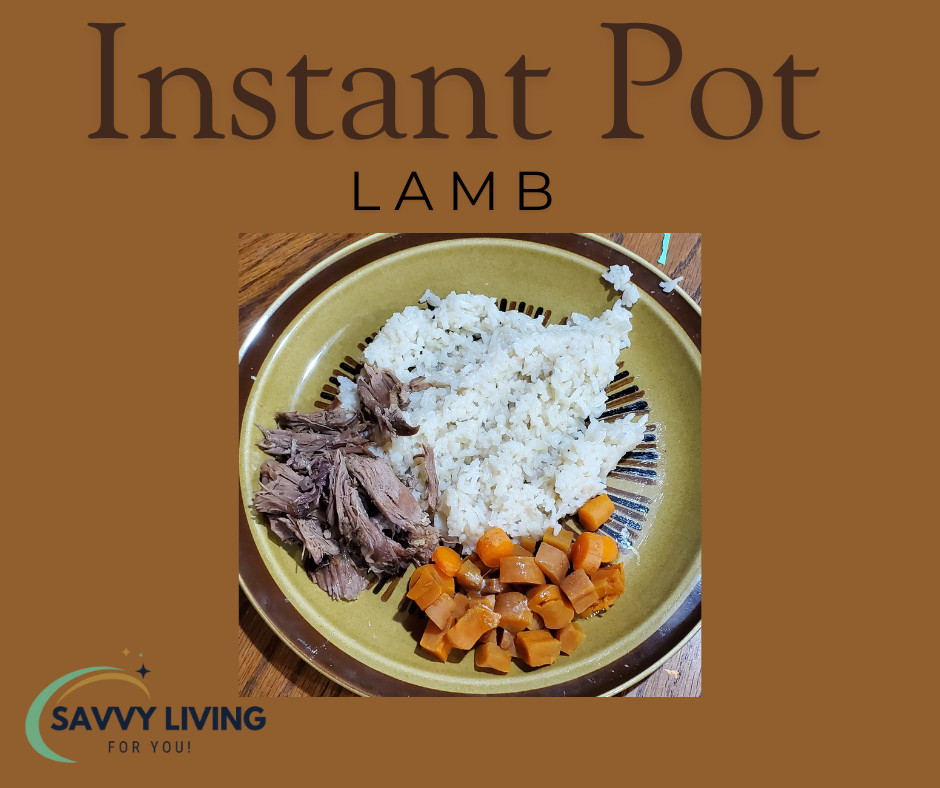
If you want fall-off-the-bone tender and juicy meat no matter the cut, that doesn’t take all day, the Instant Pot™ is your tool. I make most of my meat in the Instant Pot™ because it is hands-off and turns out tender and juicy every time. I can cook meat from frozen and still have supper ready in an hour, and I never have dry or tough meat. Here’s how:
- Prepare the meat. My go-to preparation for any cut of lamb is to cover it in garlic salt. Cut slits into the larger muscle sections and insert slabs of garlic cloves into the slits. This infuses flavor and seems to tenderize the meat.
- Load the pot. Place the wire trivet in the stainless-steel liner. Put the meat on the trivet. Lay slices of onion on top of the meat. Sprinkle with seasoning of choice over the meat. We like 1 Tablespoon of either Cajun seasoning or, our favorite, Baharat seasoning. Add enough water to cover the meat or fill up to the “max” line, careful not to pour water directly on the meat to wash off the salt and seasoning.
- Start cooking. Place the lid on the pot with the vent closed. Hit the desired button and let it cook. For most cuts of meat, “pressure cook” setting for 30 minutes will do. For larger cuts like roasts 40-45 minutes. If it's rock solid frozen, toss the 2-4 garlic cloves in the pot and cook for 90 minutes.
- Prepare to Eat! Once the meat is finished cooking, let the pressure release naturally until the safety pin drops and the lid can be opened. Pull the meat out using the handles on the trivet and set it on a baking sheet or large plate. Let it rest a few minutes, and then go to work slicing or shredding however you need. You'll find the bones will pull clean out and any fat left behind will easily separate from the meat so you’ll have tender, juicy, and lean meat to enjoy.
Note: This is the ideal way to cook cuts of meat such as the neck or loins and chops with spine still attached because the bones will fall out and separate easily and these smaller muscle pieces tend to dry out easily in the oven but stay juicy and tender in the Instant Pot™. For rump roasts, I prefer to roast in the oven for a little more flavor development.
Strain the leftover liquid through a milk filter or paper towel resting in a screen colander into mason jars. Let cool so all fat solidifies and can be scraped off. Then can or freeze this broth for a delicious broth to be used for gravy base, soups, or warm drink. The fat can be rendered further and used like tallow but do note that sheep fat has a different texture to it that might not be appealing to you. We prefer to feed it to the chickens.
You may be wondering about using the slow cooker setting. It will work. I find, however, that pressure cooking meat instead is fail-proof. I need fail-proof in my life. In fact, I just tried to make a neck bone from a recipe for lamb and rice in the crock pot from my father in-law the other day and ended up needing my Instant Pot to save the meal. After 6 hours of cooking, the meat came out tough. I didn't have 2-4 more hours to see if it would cook down more, so I figured I had nothing to lose by trying to re-cook it in the Instant Pot and see how it turned out. It came out falling apart, infused with flavor, and my family ate the whole thing. Nothing left but a plate of vertebrae and myelin sheath. That's how we like our lamb.
To see more recipes like this plus other ways we live a practical life on the homestead, check out our community on FB where we share practical homesteading tips for busy families.
Some links may be affiliate links. See full disclosure here.
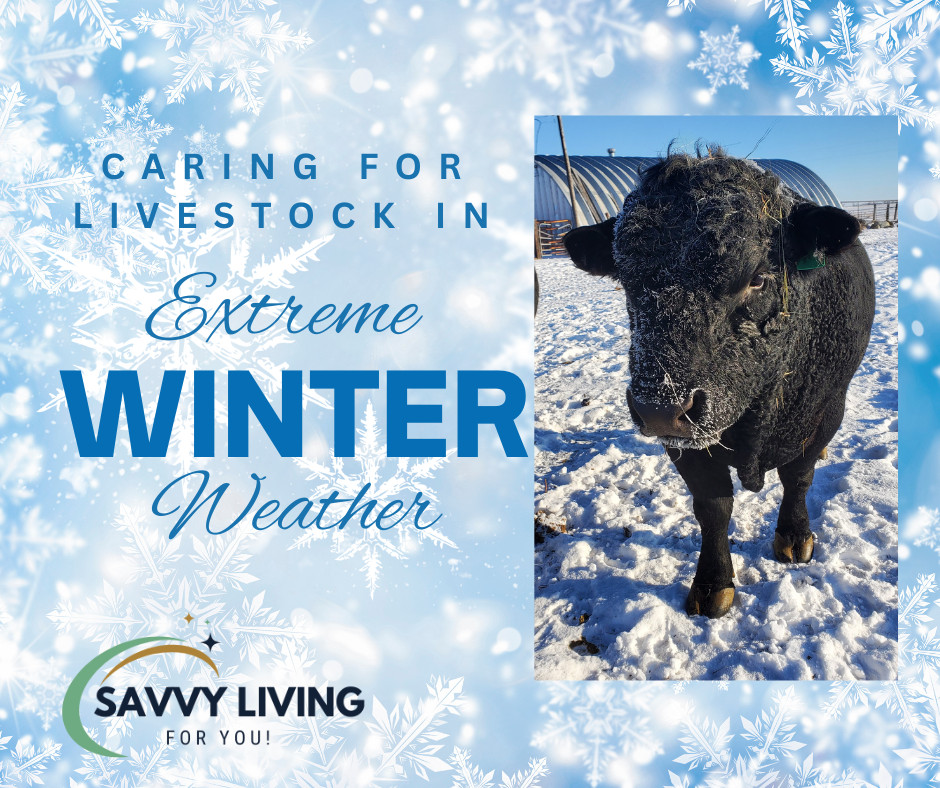
When temperatures plummet and the wind brings arctic chills, livestock care becomes a top priority. A polar vortex doesn’t just challenge us; it pushes our animals to their limits too. Keeping them healthy and comfortable during these extreme conditions is no small feat, but with the right preparations, you can make it through the cold snap together. Here are some tried-and-true methods to keep your livestock safe during a polar vortex.
1. Feed! Feed! Feed!
When it gets bitter cold, livestock burn more energy to stay warm. These extreme cold days are not the time to make the animals clean up their scraps. Instead, provide extra hay and high-energy grains. This is one of the simplest and most effective ways to help your animals maintain their body heat. When an animal eats, the fermentation within the stomach naturally generates heat. This "internal furnace" helps your animals combat bitter winds and freezing temperatures.
Keep an eye on feeding areas to ensure there's always enough hay available, especially during peak cold hours like early mornings and late evenings. If you have pastured livestock, supplement with hay even if they usually forage for themselves—frozen pastures cannot provide the same energy to sustain them during a cold spell. We also supplement our livestock with corn or oats when temps hit well below zero.
2. Water and Minerals
Water might seem like common sense in the summer, but hydration is crucial, even in freezing weather. Dehydrated animals are more susceptible to stress, illness, and cold-related conditions. Just as the dry air of winter leaches moisture from your own skin, it sucks the hydration from your animals too. That, and the fact that they are eating more dry roughage hay and consuming more salt (keep reading) will cause them to be extra thirsty. Make sure your water tanks are easily accessible. Investing in heated waterers or adding tank heaters can save you from constant de-icing and ensure your animals are getting enough to drink.
Alongside fresh water, minerals and salt play a vital role in maintaining your livestock’s overall health. I noticed our sheep and cattle especially have really hit the mineral feeders hard these past few days of -20⁰F and below. Vitamin and mineral intake helps regulate body temperature. Think of how salt melts ice by dropping the freezing point of water. Works similar in the body. Plus, water follows salt, so if you want all that water your livestock are drinking to be absorbed and hydrate the animal, they need salt. Providing free-choice minerals or salt so your animals can replenish what their bodies need is just as important during extreme cold as it is in the summer heat.
3. Provide Deep, Dry Bedding for Warmth
Animals lay on their legs to keep them warm. Deep bedding helps insulate their bodies from the frozen ground and keeps them off the icy, wet surfaces that can sap body heat quickly. Straw and wood shavings are excellent options for bedding, as they retain warmth and allow animals to burrow down for extra coziness.
Check bedding daily for moisture, as damp bedding can do more harm than good—it not only chills the animals but also increases the risk of frostbite and infections. Add fresh bedding frequently to ensure your livestock have a dry and warm place to rest. For larger animals like cattle, consider windbreaks or shelters as additional barriers from the blistering cold.
4. Wind and Shelter Protection
Speaking of shelter, providing your animals with a sturdy, windproof enclosure is critical. Whether it’s a barn, lean-to, or windbreak structure, having a place for them to escape the direct brunt of the wind can prevent frostbite and stress. Be mindful of ventilation as well; too little airflow can lead to moisture buildup, while too much exposure invites drafts.
5. Monitor Animals Closely
During extreme weather, keeping a close eye on your animals is essential. Look for warning signs of cold stress, such as shivering, lethargy, or huddling tightly together. Additionally, monitor their feed and water intake to ensure they’re maintaining their normal routines. Sick or weaker animals will require extra attention and potentially additional shelter and feed to help them recover.
6. Stay Prepared and Plan Ahead
Polar vortex conditions can escalate quickly, so planning ahead will save you from scrambling when the storm hits. Stock up on hay, bedding, and mineral supplies early. Check your watering equipment to ensure it’s functioning properly, and have a back-up plan in case of power outages or freeze ups. A little preparation can go a long way in protecting your animals during these harsh conditions.
Caring for livestock during a polar vortex is no easy task, but your extra efforts will make all the difference in your animals' health and well-being. By feeding extra hay, ensuring access to water and minerals, and providing deep, dry bedding, you can help your animals thrive even in the coldest weather. Remember, your livestock are counting on you, and with the right care, you'll both make it through to warmer days ahead.
Stay warm and stay safe during this polar vortex, and give your animals an extra treat for braving the cold!
See what else people are up to on their homesteads in our community for practical homesteading for busy families HERE.
and how I keep myself warm when I'm doing chores during these cold spells HERE.
Some links may be affiliate links. See full disclosure here.
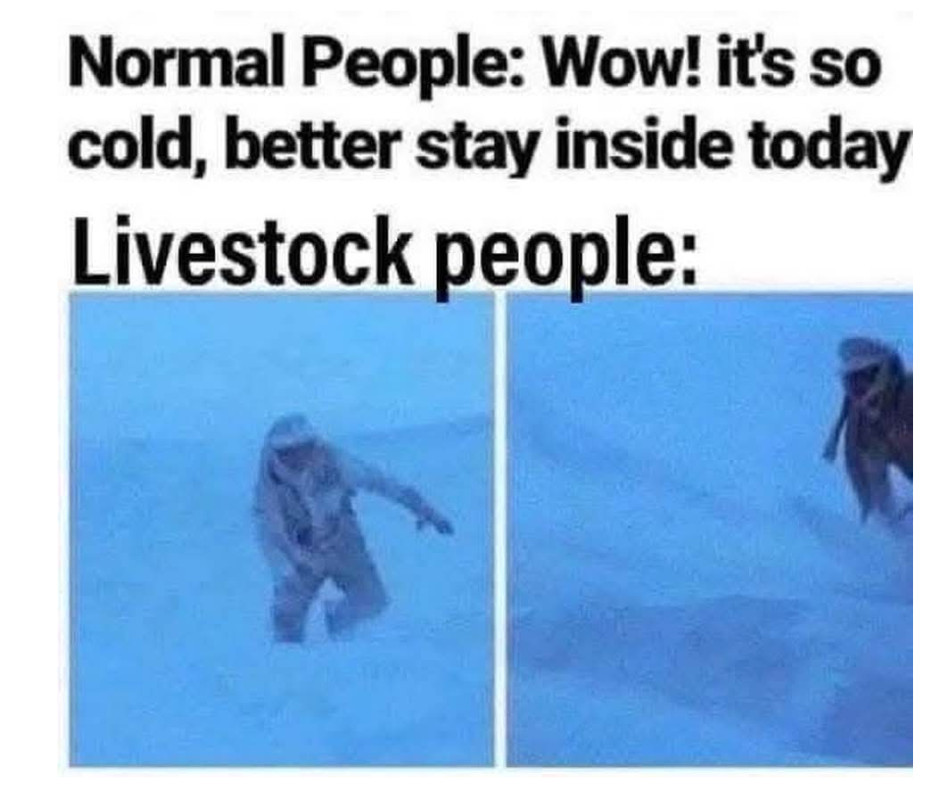
North Dakota winters can get pretty brutal cold here, but hey, we don’t have hurricanes or poisonous things, right?
Anyway, as someone who has zero body insulation, I’m always cold. I’m always the first to bundle up when temps start getting cool in fall and the last to let my gator and gloves go for the summer. Yes summer. I wear gators and gloves into summer because I’m always cold.
Because of my extreme dislike for being cold, but also an even more extreme dislike for hurricanes and poisonous things, I’ve found some pretty great gear to keep me warm because as a livestock producer, we just don’t get days off for inclement weather. In fact, we usually end up pulling double duty outside when the polar vortex hits because things break, equipment won't start, waters freeze, and animals need extra care and feed to keep warm. So how do I do it? Here are my best finds from the feet up.
Feet:
Inner layer. Some good smart wool socks. Feet and fingers are the first to get cold, so keeping the feet warm is key. Keeping them dry is the secret to keeping them warm and that is why a good wool sock is what you want. Wool wicks away the natural moisture your feet will give off as they breath and sweat so your feet stay warm. I found most wool socks to be thick and sloppy. If they’re too thick, they make your boots fit snug which also causes your feet to get cold. Your feet need wiggle room to keep circulation flowing. I also hate it when socks fall down in my boots, or come completely off. The SmartWool brand of socks remedy both these issues. They fit nice on the foot, stay in place and they aren’t super thick and bulky, they fit more like a regular sock, and they are comfortably soft, not itchy.
Outer Layer: I have two pairs of boots. My warm hunting boots and my snow-is-deep warm Muck boots. Both are good warm boots. Warmer than any winter boot I’ve owned. The hunting boot is lighter and more comfortable to wear and walk around in, but the lugs track in mud, snow and manure. When the snow gets deep or it is muddy or wet out, I opt for the Muck boots. If these were lighter, they would be all I own and in putting them to a comparison test this last polar vortex, the Muck boots proved to be warmer than my hunting boots.
Legs:
Inner layer: A good pair of long johns makes a huge difference. I’ve found these under armor base layers to be the most comfortable and warmest. Many long johns will slide down and sag in the crotch which is annoying and restricts movement. These stay in place. They fit snug, so they don’t creep up when you put your pants on over them. I hate having to reach up the leg to find your long johns up by your knees. These don’t do that, or pile up at the waist either. They are skin tight with a soft fleece inside so they’re not itchy. They check all my boxes for a fit, function, and fashion.
Middle layer: Jeans are the warmest, but not the most comfortable to wear so I’m all for a good thick pair of sweatpants. Thin won’t do though, so make sure they are nice and heavy, I like these fleeced-lined track pants or these sherpa lined ones are nice too, but go for denim jeans if you need more warmth.
Outer layer: Insulated Carhart bibs. I have ski bibs that are like my kids’ snow pants for “city outings” and they are noticeably NOT near as warm as my Carhart bibs I wear for chores. So go with Carhart bibs. They are more durable for working in too. I can move more freely in the bibs than a total one-piece coverall suit. I don’t like feeling restricted in movement. Can you tell?
CORE:
Inner layer: same Under Armor base layer as the legs. This under a normal sweatshirt is usually enough, but during this last polar vortex cold spell where we hit -50⁰F windchill I opted for my shirpa-lined sweatshirt to go over the base layer. It adds a bit more bulk, but is noticeably warmer. It’s like wearing a cozy blanket and I love it.
Middle layer: I am in love with this heated vest. It is my new winter gear staple. It prevents me from getting chilled better than anything else I have ever tried. I have a heated jacket I love too, but I like this vest even more because it fits closer to the body so you can actually feel the heating elements. I have yet to get chilled at my core while wearing this glorious invention.
Then to keep that heat in and the gusting ND winds out I love this insulated liner. You can wear all the layers you want, but if you don’t have some sort of a wind-breaking layer, you’ll feel drafts and get cold. It’s science. This liner is something I wear for all seasons. It’s comfortable, functional, and easy to keep clean.
Outer Layer: Insulated Carhart jacket. Yes, Carhart is king in chore gear / workwear. They are just so warm and durable to work in. a little heavy, but well worth the investment. They last.
Gloves: I have not found gloves that I love yet, so if you have, please share them. I’m tempted to try the heated gloves I’ve seen out there, but I feel like they wouldn’t hold up doing chores in them and they are a bit of an investment to be replacing often. So for now, I just buy insulated ski gloves. I go through a few pair each winter because they snag on things and get holes in them and it’s hard finding a pair that doesn’t sweat inside. I hate soggy gloves. The pair I have came from Walmart, but I linked them from amazon for your convenience to know a good pair that doesn't sweat, and so far, it's the end of January and I have only worn through across the index fingers because I snagged them on the fence.
Head: A neck gator is a must. I have a thin cloth gator I wear in the early fall or spring when people might look at me like I’m weird for wearing the heavy fleece one I wear all winter, but I love feeling cozy, I hate getting wind drafts down my shirt. A gator solves these issues for me. Plus, I can pull it up to my eyeballs when it’s freeze-your-face cold out. You're looking for double layered. Single layers are too thin and any breeze will go right through.
Good warm hats are hard to find, but they are out there. I wear a fleece earband first, then put a thick hat that has a fleece liner that goes all the way to the top so it is double layers. When it’s really cold or windy the bomber hat comes out. Wrap those rabbit fur flaps around your cheeks paired with the fleece gator and you’re good to go. Be sure it has a wind proof material on the head though, or your head will get cold in the wind.
So there you have it. How I dress head to toe when the wind blows and temps get frigid cold in North Dakota. As someone who is always cold and hates being cold, staying warm is super important to me, and I’ve gotten quite good at it.
Now that you've prepared yourself for the arctic tundra, CLICK HERE to read how to get your animals through these harsh cold snaps.
Be warm!
Some links may be affiliate links. See full disclosure here.
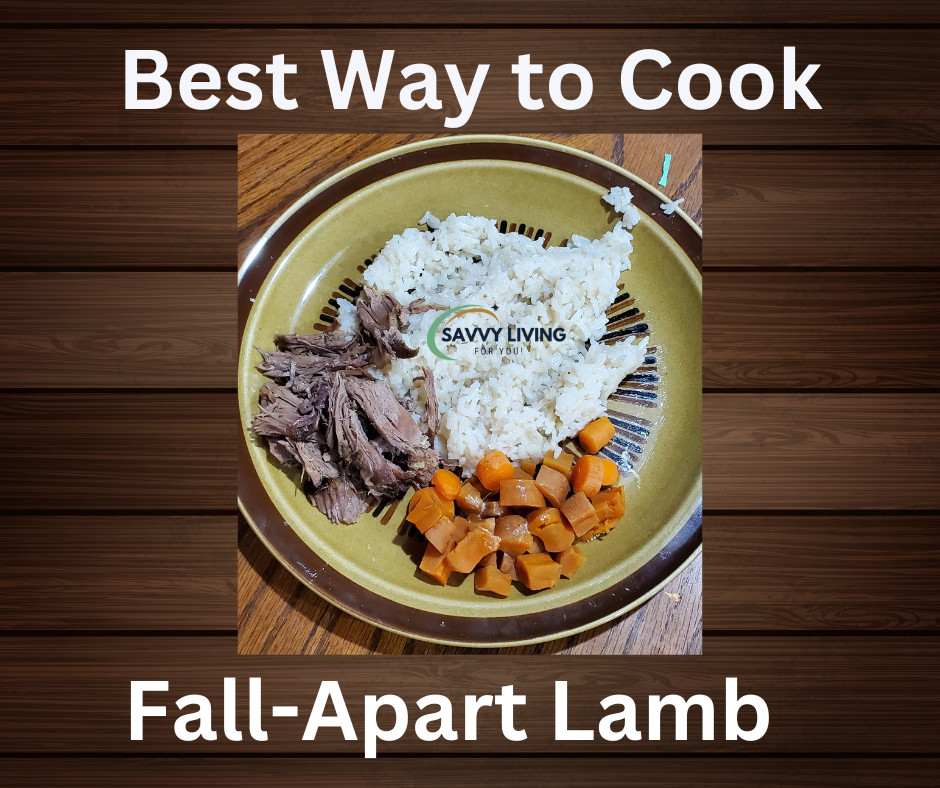
This easy roasted lamb recipe will be the most delicious mutton you will ever have. It's tender, moist, and delicious flavor will have you feeling like a top chef. But, the ease of making this will fit into any busy homesteading mom's day.
I’ll never forget the moans of delight that came from my son after every bite he took of this roasted lamb meal the first time I made it. This recipe comes from a friend of mine from the Middle East where they eat mutton like we Americans eat beef. So when I wanted to master the mutton, my Middle Eastern friend was definitely the person to ask. This lamb recipe took our mutton experience from so-so, to a top 5 favorite, and this is how it's done....
What You’ll Need:
Lamb rump roast or loins
Garlic
Onion
Kosher salt
Kosher salt
Black pepper
Water
Apple cider vinegar
Vegetables of choice
Make it:
- Prepare the oven bag as directed on package instructions. Place the bag on a trivet/wire rack inside the roasting pan.
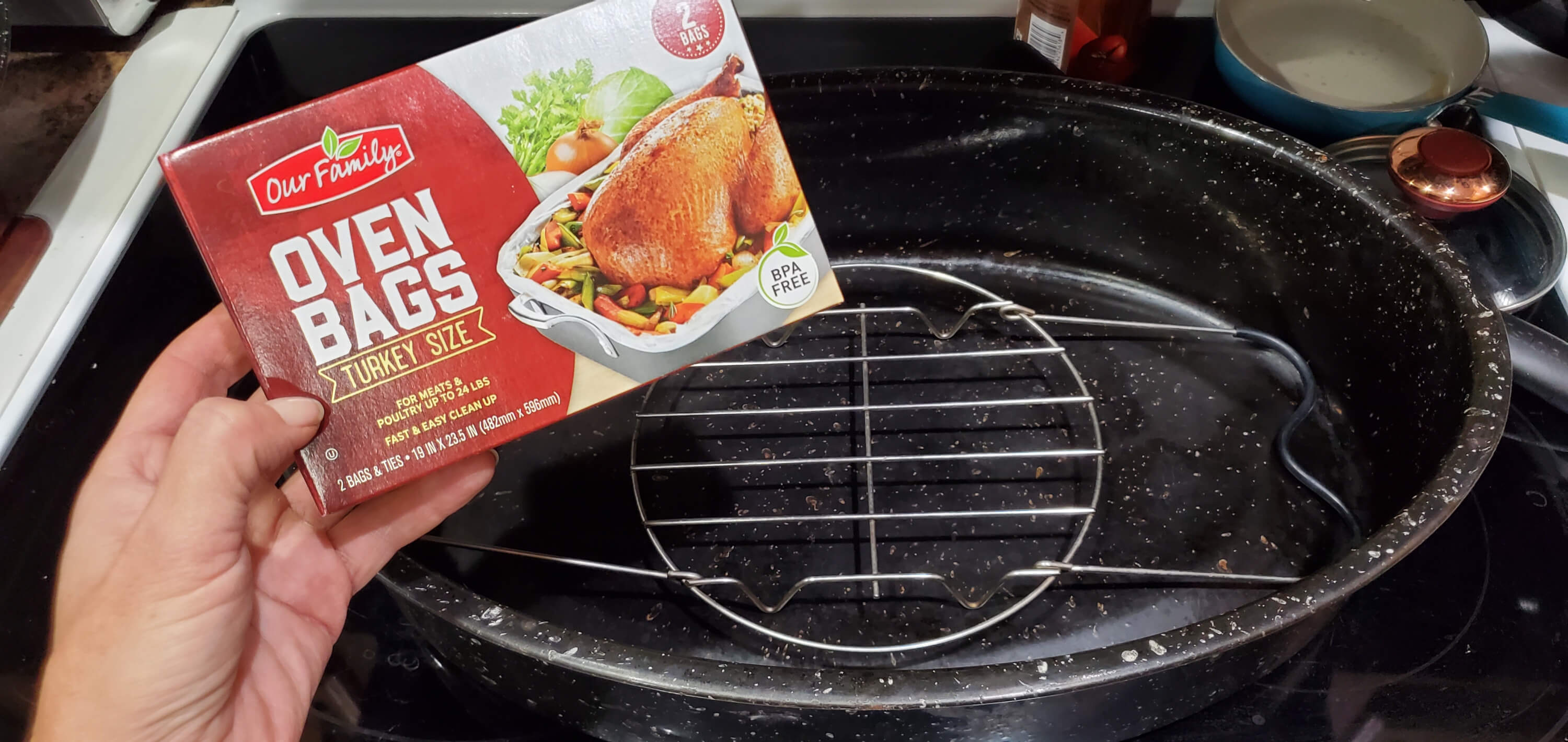
- Cut tiny slits in the meat every few inches and stick slices of garlic cloves in them.
- Mix together a rub of 1 Tablespoon Kosher salt, 1 teaspoon Baharat spice, ½ teaspoon black pepper. Rub all over the meat.
- Place the seasoned meat inside the oven bag and add 1 cup water, 1 chunked onion, ½ cup apple cider vinegar^, any vegetables you wish to roast.
- Close up the bag and tie according to package instructions, making the steam vents as directed for the oven bag. I like to keep the bag snug around the meat so the meat sits in the juices.
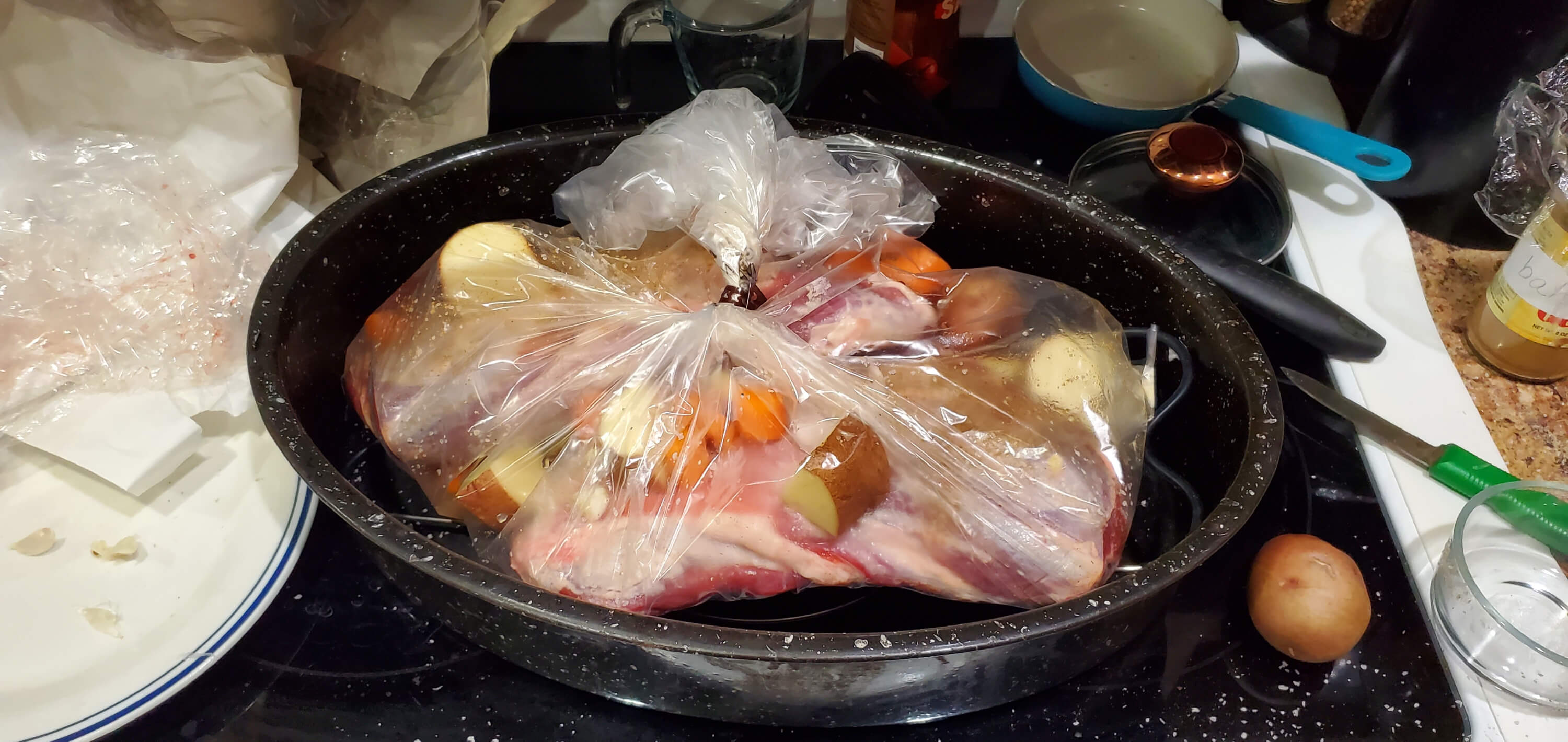
- With the bag of seasoned meat and veggies placed on the trivet inside the roasting pan, cover and cook at 320⁰F for 4 hours or until meat falls apart with a fork.
- When the meat is cooked, poke a hole in the bottom of the bag to drain the juices into a measuring cup. Place in fridge to allow fat to solidify for easy removal. This liquid can be used to make a gravy or au jus sauce, whichever you prefer.
- Serve the lamb with vegetables over rice, topped with the gravy or au jus.
^ apple cider vinegar is optional, but it adds a noticeable depth to the flavor. Homemade apple scrap vinegar also works great and is preferred by us.
Special note: you're probably wondering if the Baharat spice is worth buying because, unless you're from the Middle East, you won't already have it in your spice cabinet. My answer to this is YES! Get it! It quickly became a pantry staple that I use on everything, especially meats and soups. It has a hint of cumin, but that is the only particular spice I can make out. It is a unique blend of warm, comforting, savory spices. It will not disappoint. PROMISE.
To Make Gravy:
In a stainless-steel pot make a roux by melting 2 tablespoons butter. Add 2 Tablespoons flour. Mix well into a paste and let cook a minute or two. You’ll then add 2 cups liquid*. Whisk until there are no lumps. Keep whisking until the gravy thickens to your liking. Remove from heat. The gravy should set a little more as it cools.
*You’ll need to taste the broth from the roast for saltiness and adjust the broth to water ratio to get the right flavor balance you’re looking for in 2 cups of water/broth liquid.
Enjoy the meat and vegetables served over white rice with gravy or au jus.
There you have it! A super simple, extremely tender, moist, and delicious lamb recipe the whole family will enjoy.
For more ways to enjoy the fruits of your homestead, jump in our community of busy homesteading families where we share practical tips for homesteading success. We'd love to have you.
Some links may be affiliate links. See full disclosure here.
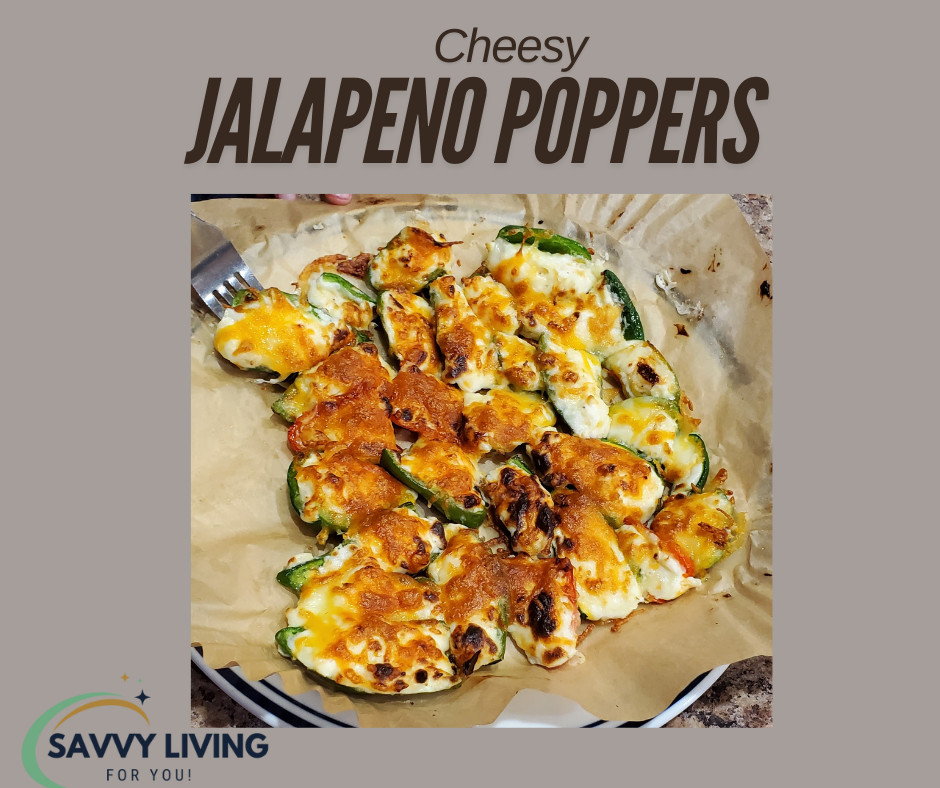
Jalapeño Poppers
It’s that time of year when I dig up my pepper plants from the garden and bring them inside for the winter. I love doing this because for one, it saves me from having to buy new plants or seeds in spring, and two, many times I get peppers from them in the winter. I only wish I had a giant greenhouse room to have more plants inside.
So what do I do with all those peppers? Most years I will pickle a few jars, but this Jalapeno Popper recipe is another delicious way we use up our peppers. Using Jalapeno for a little kick and bell peppers for the girls who don’t like spicy. You can make these in the Air Fryer or in the Oven.
What you’ll need
- ~12 Jalapeño peppers cut in half, seeds removed (wear gloves when you do this)
- 8 oz cream cheese at room temperature
- 1 cup shredded cheese, cheddar or a blend is what we like
- ½ tsp garlic powder
- ¼ tsp sea salt
- ¼ tsp black pepper (optional)
- 4 slices precooked bacon (optional)
Instructions
- Prep the jalapenos. While wearing rubber gloves, slice the peppers in half, remove the seeds and membranes. The spice is in the membrane, so if you like more spice, leave the membrane in. You can leave the tops on or off. We like them off for faster deposits into the mouth.
- Mix the filling. Mix together the cream cheese, shredded cheese, garlic powder, salt and pepper. I like to use my KitchenAid stand mixer with the beater paddle for this.
- Prep your pan. If using the Air Fryer, line it with these parchment liners for easy cleanup. If using the oven, line a sheet pan with foil or parchment. Nobody has time to be scrubbing baked cheese off pans.
- Fill the Peppers. Fill the pepper halves with the cream cheese filling and top with additional shredded cheese and bacon. Side note: Any filling left over goes really well on top of baked potatoes.
- Bake. If using the Air Fryer, bake at 400⁰F for ~5 minutes until cheese is golden how you like it. For the oven, bake at 400 for 10-15 minutes.
That’s it! Enjoy these delicious Jalapeno poppers as party hors d’oeuvre, appetizers, or a healthy snack.
For more recipes and ideas for what to do with your abundant homestead and garden harvests, join our Facebook community and stay tuned for the release of my new book, Abundant Homestead, a collection of practical ways for busy families to use and preserve your homestead harvests. Get on the list to get a free copy HERE.
Some links may be affiliate links. See full disclosure here.
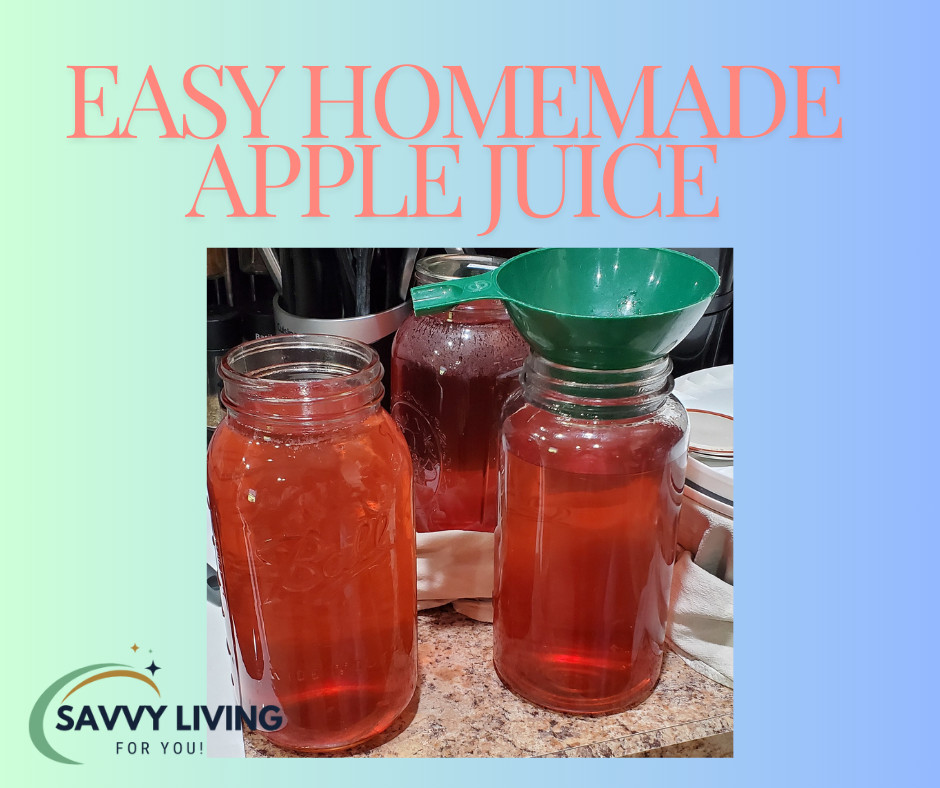
The easiest way to use up excess apples is to turn them into homemade apple juice using this hands-off method that your whole family will love.
Read more...This is an old family recipe that originally had a biscuit mix crust but I replaced the biscuit crust with this delicious zucchini or cauliflower crust and it is a match made in heaven. The sour cream egg filling is divine! A moist egg bake with a hint of creaminess and delicious pop of garlic will have your taste buds dancing. The fact that it is low carb and whole food healthy will have your homesteading mama self fulfilled and satisfied.
I’ll give you the base recipe, but it is really versatile with what you can add to it. Check out the notes at the bottom for our favorite add-ins and substitutes.
WHAT YOU’LL NEED
A mixing bowl
12” cast iron skillet or 9x13” baking pan
8 eggs
1/3 cup mayo
1 cup sour cream
1 tsp minced onion (dried or fresh)
½ tsp garlic salt (reduce if using salty meat like ham or sausage)
1/8 tsp pepper
1 cup chicken (or any meat of choice. See notes)
1 cup shredded cheese like cheddar or Colby blend
½ cup spinach or leafy green of choice
MAKE IT
1. Prepare your crust following the recipe for Zucchini/cauliflower crust. Once the crust is out of the oven, lower the temp to 350.
2. Mix the eggs, mayo, sour cream and spices together with a whisk. Then add the meat, cheese, and leafy greens.
3. Pour it over the already prepared crust and pop in the already warm oven.
4. Bake it at 350 for 30-35 minutes until set in the middle.
NOTES: Any cubed or shredded meat can be used in place of the chicken. We like our home-made sausage or ham the best. Reduce the salt about half when using a salty meat. Adding a little pre-cooked bacon is a nice touch as well. You can even omit the meat altogether. For the leafy greens, any will do. I stopped growing spinach in my garden and replaced it with Swiss Chard instead for higher more economical yield and easier growing in my area. Kale works great too, or you can even omit the greens altogether.
I hope you enjoy this wholesome family recipe as much as we do. For more recipes and homesteading lifestyle tips check out our community on Facebook, Home Instead; practical homesteading tips, tricks and recipes.
Some links may be affiliate links. See full disclosure here.
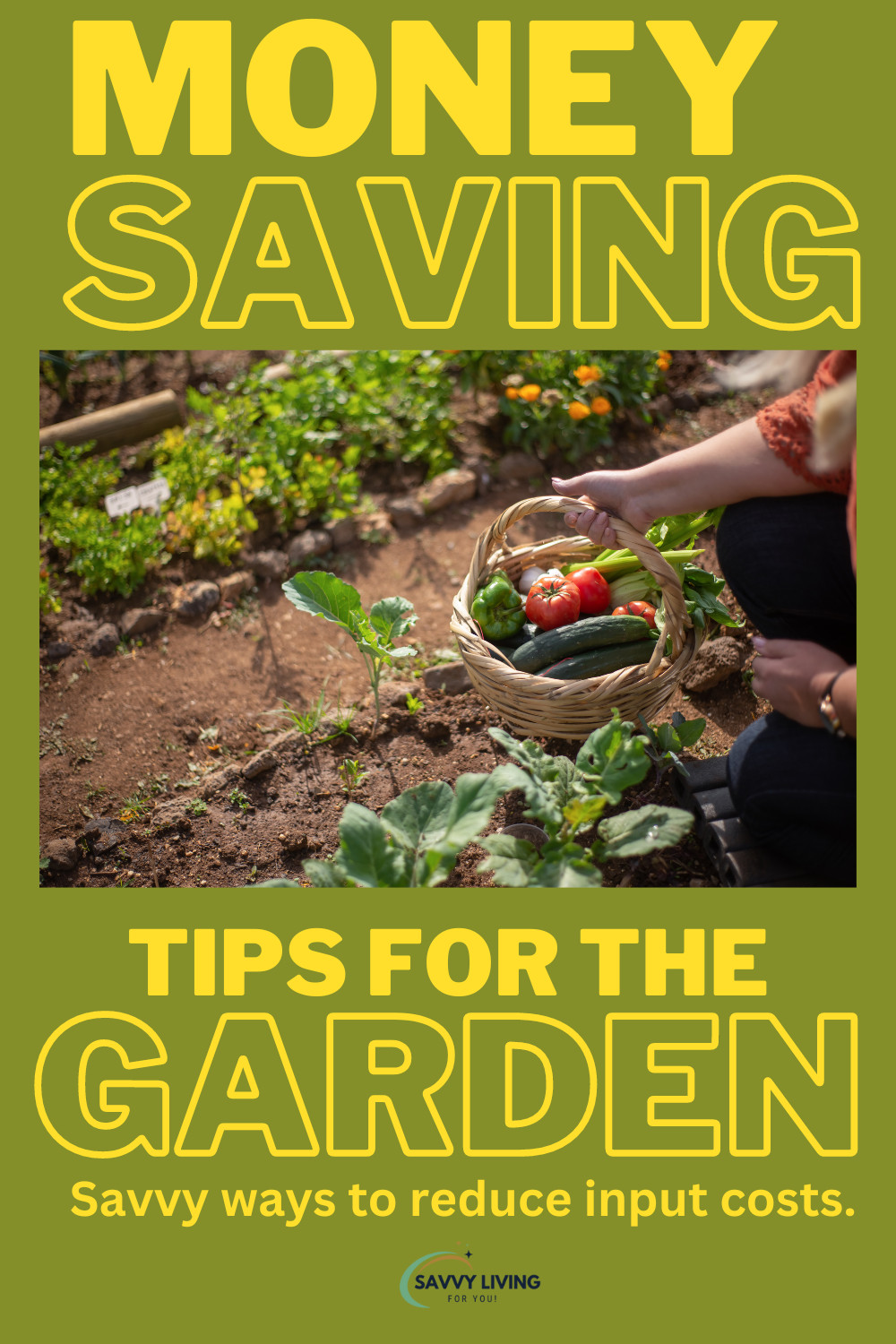
Things I’ve stopped doing in the garden that save money.
With the rising cost of things these days, we’re all looking for ways to save money. Gardening in itself is a great way to save money, but I’ve gone even further to share my best tips for saving money in the garden. Check it out…..
1. Don’t buy fertilizer or bagged manure/compost.
We live on a farm, so manure compost is abundant around here, but for those of you in the city or not on a farm you still have better options than buying bagged manure or pelleted fertilizers. Most farms are happy to let you fill a garbage can or pickup, etc for free, or at least a lower price than the stores. Maybe you have a neighbor with some chickens in the backyard? Ask them.
Composting is another great alternative. Composting is a natural process that transforms your kitchen and garden waste into a valuable and nutrient-rich food for your garden. It's easy to make and use. All organic matter eventually decomposes. In a compost pile, this process is accelerated by conditions created by the composting gardener (you).
Use compost bins like THIS ONE to make the process more user friendly.
2. Stop buying seeds.
You won’t be able to do this entirely, but here are the things I no longer buy seeds for and how I do it.
- Potatoes. Save the baby potatoes that are too small to bother with, or the ones that have gone soft or sprouted before you could eat them. They will store in a cool dry place in burlap or cardboard until you can plant them, and will yield potatoes as good as any seed potatoes you buy. I haven’t bought seed potatoes in 3 years (since discovering this trick). This year alone, my garden yielded almost 100 pounds of potatoes just from the tiny ones I saved from last year’s harvest or I bought but went bad. That’s a lot of money saved….and a lot of lefse’ to make and freeze. See how I do that in the next blog.
- Tomatoes. I have the best luck with cherry tomatoes. They just come up voluntarily in my garden now and I let them. I also have random Roma and Heirlooms show up, but mostly cherry. So, you can leave the fruits fall in the ground and grow on their own, or if you don’t want your garden looking like a tomato jungle like mine did this year, save the seeds and plant them where you’d like them. I just remove the seeds and spread them on some scrap paper to dry and store them in a bag with a paper towel or napkin inside in case I don’t get them dried enough. You may notice the cherries may not be as sweet, but I use them in my sauces and such as normal tomatoes so sweetness isn’t an issue. And when you have more tomatoes than you know what to do with, I have an awesome-sauce recipe for sauces and salsa (haha), including the best sauce-making gadget around that cuts time by peeling and pitting your tomatoes for you. A must-have thing for my kitchen.
- Green beans. No matter how good you check your plants at harvest time, you always miss a bean or ten and they get too big and seedy. I started leaving them on the vine to complete their seed-making process, then harvest the seeds to plant next season. Works great and I don’t feel bad about letting those beans go to waste.
- Peas. Same as the beans.
- Dill. Plant dill once and you’ll never have to buy seed again if you leave just one stem go to seed. You could even ask a friend for a stem of over-ripe dill to let dry and harvest the seed. The flowers turn to seed, so simply let the dill go to seed, and strip the seeds off. You’ll get hundreds from just one stem. I do this with cilantro and mint as well.
- Onions. I just have the red (purple) spring onions in my garden now because they produce their own bulbs and keep planting themselves. I mean, a plant that plants itself is definitely what this busy mama needs in her life. Every onion bulb will grow a cluster of 4-6 more onion bulbs at the end of its stem. You can let the stem tip over and plant itself, or you can pick off the cluster of bulbs and plant them where you want them. I have planted the whole cluster as one and I have broken them apart to plant as single bulbs. Single bulbs tend to grow bigger, but if they are teeny-tiny, plant the cluster and split them when they get bigger.
- Garlic. This one will take a few years to build up enough seed stock to be self sustaining, but every clove of garlic planted will give you a cluster of 4 or more cloves. I grow hard neck variety because I’m in zone 4. You will have some cloves that are giant and glorious, cook with those. The cloves that are smaller are the ones I save for planting. This year I tried an experiment that so far seems to be working well….if they survive our North Dakota winter. I let a few of my garlic scapes (the top flowers) go to seed and planted that. So far they are sprouting and creating mini bulbs. I expect them to sprout again in spring, but it’ll likely take 2 years before they are big enough to eat. If this experiment works out, I will have over 50 garlic bulbs to plant from my original 8 cloves I started with. (fingers crossed)
- Peppers. Did you know you can transplant your pepper plants to a pot and bring them inside for the winter? I’ve done this with jalapenos and green bells, but any variety should do. There’s a special way to prune the plant I learned on YouTube. The idea is for the plant to go dormant, but mine didn’t go dormant, and in fact, kept giving me peppers all winter, and when I planted it back in the garden in spring it was LOADED all summer long. I currently have 10 pepper plants in my living room waiting to be replanted next spring. Good thing I learned a great way to pickle peppers this year. I should no longer need to buy jars of those anymore either. I'll share how in another blog (you may as well just subscribe below so you don't miss these).
- Flowers. There are tons of flowers that you can harvest seeds from. A simple youtube search of the flowers you have will tell you if and how to get seeds from them. The easiest for beginners is the hardy Marigold. Simply let it dry out. Pluck the petals and there will be long skinny seeds. I currently have a million petunia seeds I harvested from the mother’s day basket my kids gave me in May. Ask your flower-loving friends to let you harvest some seeds to get you started. If they know about this trick, they’ll have plenty to share. If they don’t know, they’ll be happy for the tip.
There are tons of other plants you can harvest seeds from. This is just what I have personally done myself. I’d love for others to share their experiences in the comments as well. Now for my next tip....
3. Stop buying spinach. We LOVE spinach, but up here in ND, good, fresh spinach is hard to come by and a bit spendy. I was growing it in my garden, but found its yield to be not very rewarding compared to the bountiful harvests of the other things I grow. A packet of seeds barely gave us enough to enjoy for a month. It just goes to seed so fast. It yielded so little. It was not paying for itself. A friend of mine told me to use Swiss Chard instead, and gave me some to try. I will never plant spinach again. Instead I plant Swiss Chard and use it in everything I used to use spinach in. No one has been able to tell the difference. I used to need to plant 3 seed packets of spinach to get enough for my family to enjoy half the summer; approximately a $12 investment to yield barely what I could buy $3 at the grocery store. This year I planted half a packet of Swiss Chard. We ate on it all summer, and it’s now mid-October and I still have a gallon-sized baggie of it sitting crispy in my fridge. Its big leafy goodness just yields so much and stays fresh much longer. It is DEFINITELY a permanent add to my garden. Goodbye spinach.
4. Stop winging it from memory. I started keeping records because each spring I would spend too much time trying to figure out how much seed to buy to get the yields I needed. Then I would spend too much time in my garden trying to lay out a planting plan based on memory of how the year before went. I don’t have time for all that thinking and remembering and who wants to repeat epic fails? Creating journals is what I do, so when I couldn’t find a suitable garden journal to buy, I made one that suited my needs. One that doesn’t have a lot of extra stuff. Just plain and simple, easy to use, exactly what I want to record. Nothing more to sift through. It has space to plot how I laid out the garden plots, record what I planted, when I planted, and when it will be ready to harvest, and lots of note writing space to record anything different I did or need to do, what did well where, etc. There’s a companion plant chart for easy access too. My garden has spots that are in partial shade and full sun. There is harder soil and soft. I also have 2 gardens, so recording which vegetables do better in which garden and where is helpful too. In my world, time is more precious than money, so taking a few seconds to jot a few notes that saves me hours of planning and trying to remember things year-to-year is a sound investment. Grab the journal HERE.
So there you have it, the many ways to save money while still having a successful vegetable garden. By doing your own composting, harvesting seeds, and utilizing the right varieties of plants to fit your needs, you can reduce expenses. If you’re looking for even more advice and insights, make sure to check out the savvy living community. There you’ll find plenty of tips and tricks from individuals who have already put in countless hours of effort into maintaining beautiful gardens. So get out there and start reducing your gardening costs!
Some links may be affiliate links. See full disclosure here.
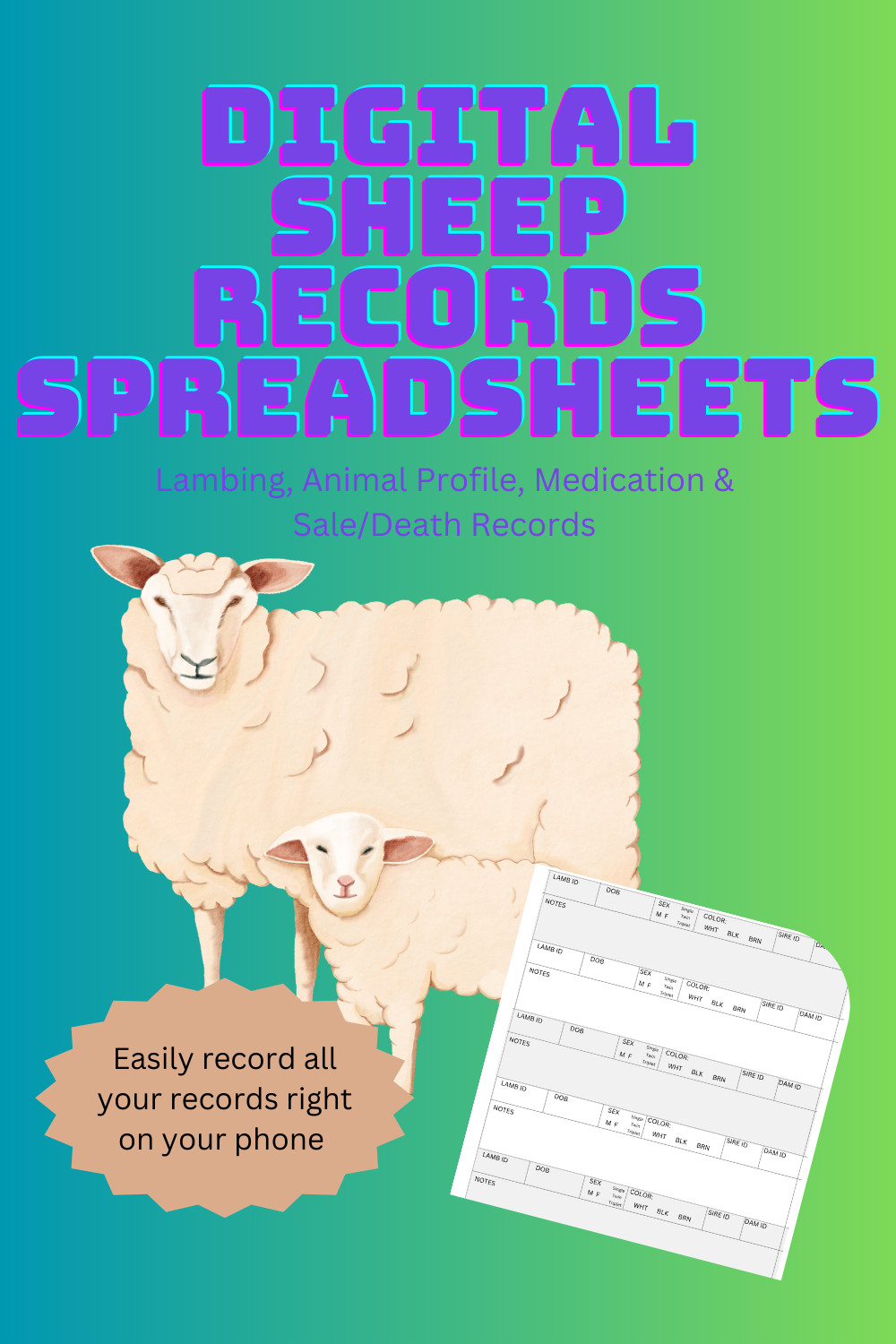
With so much to manage on a farm, keeping your animal records often becomes unorganized and lackluster. Keeping records on each animal's health, breeding, and medications is crucial to maintaining a healthy and happy flock and mastering your breeding program. However, traditional pen and paper methods can be difficult to keep organized and easily accessible…even lost. This is where these digital spreadsheets come in – offering a streamlined and efficient way to keep track of your sheep records from wherever you’re at.
Benefits of keeping digital records….
1. Simplify Record Keeping
Digital spreadsheets are multi-functional and can be customized to fit your individual sheep record keeping needs. You can easily modify fields to track whatever information is necessary to meet your farm's needs. From lambing dates, weights, and health history, to vaccination and medication schedules, everything is all in one place. The beauty of these digital spreadsheets is that they're easy to update and share with farmhands or veterinarians. This way, you can record data in real-time, keeping everyone you choose to give access in the loop.
2. Analyze Data
Digital spreadsheets can also offer useful insights into your flock's performance. By aggregating data on wool production, lambing dates, and breeding success rates, you can make informed decisions on breeding and culling practices. With the power of data analysis at your fingertips, you can ensure your flock is as productive as possible and your breeding seasons run smoothly with less complications.
3. Time-Saving
Pen and paper record keeping is a tedious process when you’re looking for a specific animal or detail. Transferring paper records onto a computer spreadsheet where you can do a search for these things takes extra time. These Spreadsheets will save you time, reduce frustration, and free up more of your valuable resources.
4. Cost-Effective
Unlike custom-made software that can be expensive, these digital spreadsheets offer a low-cost alternative for tracking and managing sheep records. They're also less complicated than some other farm management software on the market. If you can run Microsoft Excel or Google sheets at their simplest functions, you can manage these spreadsheets, and these digital spreadsheets come with a complete lesson on how to use them.
5. Secure and Accessible
One of the best aspects of these digital spreadsheets is the access you have to them along with the security they offer. With saved files in the cloud, you can access them from anywhere or any device with an internet connection, making it easy to share files with other farmworkers who have the link as well. They're also more secure than handwritten notes as they can be password-protected and can only be accessed by those authorized to do so.
Keeping track of sheep records can be a daunting task for farm operators. However, these digital spreadsheets could be the solution you need to streamline the record keeping process. With its convenience, time-saving, cost-effective nature, and overall effectiveness, you can ensure that sheep record keeping on your farm is smooth and efficient. Customize each field to track only what you want and make record keeping a breeze. These spreadsheets come with complete instructions on how to access them from any device, do simple data entry, customize fields, expand existing pages, and add new pages, so anyone can easily use this system regardless how “tech-savvy” they are.
Grab your spreadsheets HERE so you too can have an easy and convenient system for keeping track of your sheep program records.
If you'd like to connect with us on FB, follow our page, Schmaltz Ranch or join my group for farm wives here.
Some links may be affiliate links. See full disclosure here.


